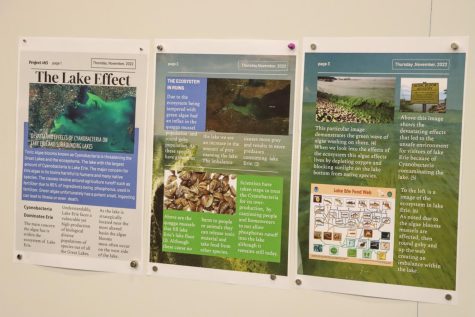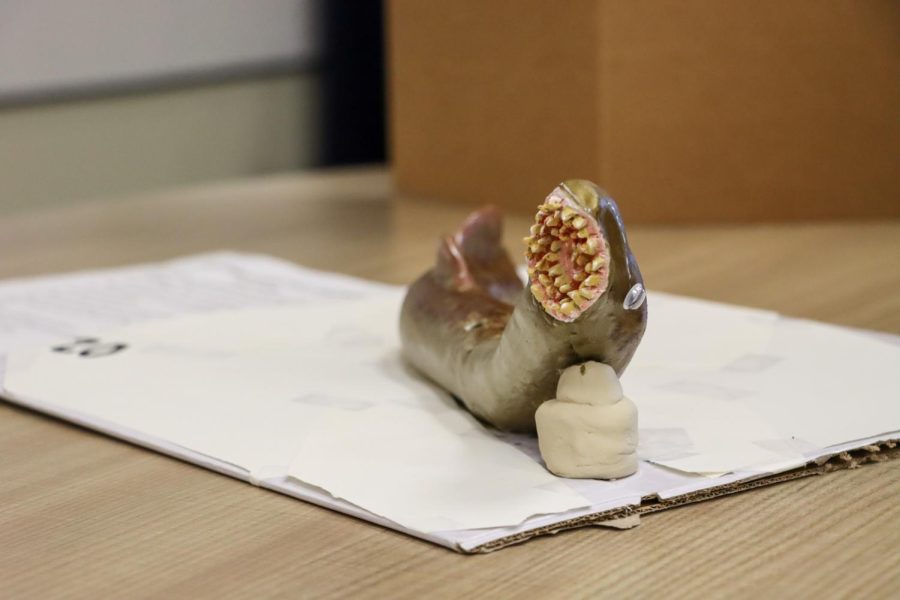Mary Idema Pew Library hosts Great Lakes invasive species projects
Nov 21, 2022
In an effort to raise awareness on the invasion of exotic species into the Great Lakes, a geology class at Grand Valley State University held a Creative Project Day where students used their creativity to make a project based on an invasive species of their choosing.
At the multi-purpose room in the Mary Idema Pew Library more than 80 creative projects were displayed, including posters, poems, presentations, songs, sculptures and dioramas.
The project topics centered on a problem the students chose from a book titled “Pandora’s Locks” written by Jeff Alexander. The book discusses the St. Andrews Seaway, a network of locks, canals and channels that enable ships to move from the Atlantic Ocean to the Great Lakes, taking invasive species with them.
“I had students develop a creative project that is focused on educating the general public about a particular topic,” said Peter Riemersma, the geology professor who assigned the projects.

Riemersma said he wanted his students to communicate their knowledge visually and creatively. Although this is Riemersma’s eighth time teaching geography 105, he said every time he teaches it he’s surprised by his students’ new ideas.
“Developing material to teach somebody else requires a different approach and a deeper understanding of the content than just writing a paper on the topic,” Riemersma said.
Many students involved were surprised by their findings when researching.
“I didn’t know the extent of the damage that invasive species caused, and I didn’t really know the severity of them and all of the different types of things they impacted,” said student Charlotte Schuerman. “Not just the water specifically but things like buildings also.”
Schuerman created a presentation about the lifecycle of a zebra mussel, one of the most problematic invasive species discussed in the book.
The Viral Hemorrhagic Septicemia virus, known as the fish equivalent of the Ebola virus due to its fatality, was the subject of student Melissa Ramirez’s project. She said when fish acquire this virus, they develop red blotches on their bodies, and their eyes start to bleed.
“There was a risk of the virus getting into Lake Superior, and that’s when people started to really focus their attention on finding a cure,” Ramirez said.
As students walked around the room to observe all of the projects they were given the opportunity to evaluate each others’ work and choose their favorites. Students could then case votes based on which project was the greatest overall, which was the most informative and which was the most creative.
The winning students will be awarded extra credit points, as well as a possible trophy.






















